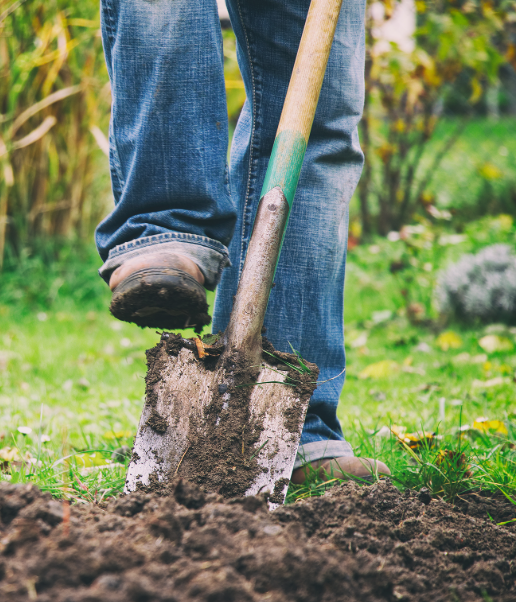
Your Complete Guide to Safe Digging: How to Dig Without Risk or Penalty
When it comes to construction projects, digging isn’t just about moving dirt around with heavy machinery. It’s a complex process that requires thorough planning, especially when it comes to excavation safety. Without proper precautions, you could risk damaging underground utilities like gas pipes, electrical cables, or water lines. This is why safety in excavation is critical for every project.
In this guide, we’ll break down the essential steps to ensure safe digging practices, from initial planning to communication with utility services, all while protecting both your team and the environment. Read on for a comprehensive approach to safe excavation.
What is Digging in Construction?
In construction, “digging” refers to the excavation process used to prepare a site for building foundations, installing water pipes, drainage systems, and more. While the task may seem straightforward, improper excavation can lead to severe accidents, property damage, or even injury or loss of life.
Before any digging begins, it’s essential to know what lies beneath the surface. Underground utility lines, such as gas or electricity, must be accurately mapped to avoid potentially disastrous situations. The best practice involves site surveys, utility mapping, and the use of tracking devices to ensure the excavation is safe. A well-prepared excavation plan leads to faster, more efficient work while minimizing the risk of accidents.
Essential Tools for Safe Digging
Using the right tools can make a big difference in ensuring safe and effective digging. Here are some common tools used in excavation, along with their specific functions:
- Shovels: Used for moving soil, sand, and gravel, shovels are a basic but vital tool in many excavation tasks.
- Spades: These are ideal for digging into compacted soil and creating clean edges in holes.
- Axes: Used for cutting through roots and other tough materials during excavation.
- Protective Personal Equipment (PPE): Not a tool per se, but essential for safety, PPE includes helmets, gloves, and high-visibility vests to protect workers on site.
- Hoes: Helpful for breaking up hard soil and clearing areas that need to be dug.
- Trowels: Small tools designed for more precise, detailed digging tasks.
Using these tools appropriately is crucial for avoiding injuries and preventing damage to underground utilities. Proper training on tool usage is also essential to ensure that every worker knows when and how to use them correctly.
Key Steps for Safe Digging
Safety should be your top priority during excavation work. By following a structured process, you can minimize risks and protect everyone involved. Below are the essential steps for carrying out safe excavation:
1. Plan Your Excavation
Before starting any digging, a solid plan is necessary. Identify the area you will be excavating and assess potential risks. Consider the activities around the site and make sure your project schedule doesn’t overlap with others. Proper planning helps avoid complications and ensures a smooth process throughout the excavation.
2. Contact Utility Services
Before breaking ground, reach out to local utility companies to verify if there are any underground lines—gas, electricity, or water—within the work area. Utility services typically provide maps or information to help guide your work and ensure no critical lines are disturbed during excavation. This is a crucial step to protect both workers and the community.
3. Wait for Utility Markings
Once you’ve contacted utility companies, do not begin digging until they’ve arrived to mark the ground with flags or paint. These markings indicate the precise location of underground utilities, helping you avoid accidents or damage. Only proceed once all markings are in place and visible to everyone involved.
4. Respect the Markings
Once the utility markings are on-site, it’s important not to move or ignore them. These marks are there to guide your work, so ensure all workers are aware of their significance. Disregarding these markers could lead to costly or dangerous mistakes, so always keep them intact and respected throughout the excavation process.
5. Dig with Care
As you begin the excavation, proceed with caution, especially near marked utility lines. Use hand tools, such as shovels or trowels, when working close to these lines instead of heavy machinery. This helps minimize the risk of accidentally damaging underground utilities.
6. Monitor and Communicate
Stay vigilant throughout the excavation process and maintain communication with your team. If there’s any change in the situation, such as losing a marker or encountering an unexpected obstacle, inform everyone involved immediately. Clear communication is key to ensuring that the project remains on track and safe.
7. Report Any Damage Immediately
In the unfortunate event that you accidentally damage an underground utility, it’s important to report the incident immediately to the appropriate authorities. Whether it’s a water pipe or electrical cable, prompt reporting ensures quick repairs and prevents further damage. Don’t attempt to fix the issue yourself—report it and follow the necessary procedures to resolve the problem safely.
Final Thoughts
Excavation work is more than just using heavy machinery; it involves understanding the risks and taking the proper safety measures. By following the correct procedures, conducting thorough site surveys, and using the right tools, you can significantly reduce the chances of accidents. With careful planning, communication, and attention to detail, excavation can be carried out efficiently and safely, ensuring the success of your construction project.